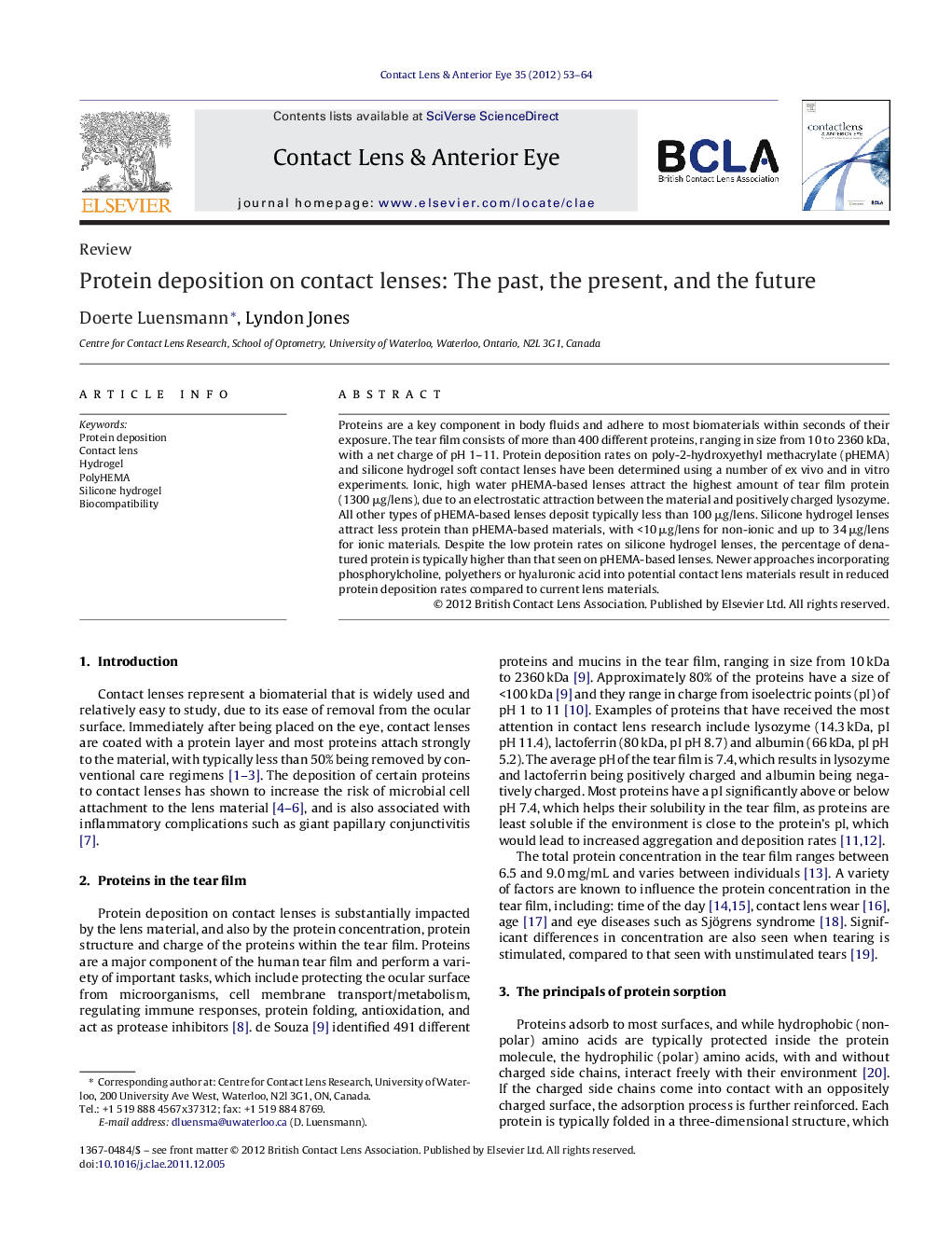| کد مقاله | کد نشریه | سال انتشار | مقاله انگلیسی | نسخه تمام متن |
|---|---|---|---|---|
| 2699309 | 1144169 | 2012 | 12 صفحه PDF | دانلود رایگان |

Proteins are a key component in body fluids and adhere to most biomaterials within seconds of their exposure. The tear film consists of more than 400 different proteins, ranging in size from 10 to 2360 kDa, with a net charge of pH 1–11. Protein deposition rates on poly-2-hydroxyethyl methacrylate (pHEMA) and silicone hydrogel soft contact lenses have been determined using a number of ex vivo and in vitro experiments. Ionic, high water pHEMA-based lenses attract the highest amount of tear film protein (1300 μg/lens), due to an electrostatic attraction between the material and positively charged lysozyme. All other types of pHEMA-based lenses deposit typically less than 100 μg/lens. Silicone hydrogel lenses attract less protein than pHEMA-based materials, with <10 μg/lens for non-ionic and up to 34 μg/lens for ionic materials. Despite the low protein rates on silicone hydrogel lenses, the percentage of denatured protein is typically higher than that seen on pHEMA-based lenses. Newer approaches incorporating phosphorylcholine, polyethers or hyaluronic acid into potential contact lens materials result in reduced protein deposition rates compared to current lens materials.
Journal: Contact Lens and Anterior Eye - Volume 35, Issue 2, April 2012, Pages 53–64